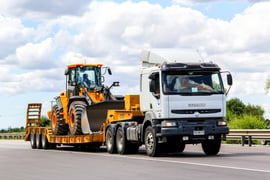In one particular case, damage was done to:
- Auto physical damage to truck chassis and trailer
- Inland Marine items - on- and in- the truck
Noticing the lack of central communication point, R&R stepped in. Meeting with each of the adjusters, three approaches were discussed how to evaluate the ACV (Actual Cash Value) of the damaged items:
- Market approach
- Straight-line depreciation
- Broad evidence rule
Each situation will dictate the best evaluation method. In analyzing the various offers from the insurance company's adjusters, and looking at the client's equipment value, R&R was able to recover an additional $78,000+ for our client compared to the original offer from the carrier!
Lessons learned?
- Determine best method for equipment valuation
- Identify all equipment, including smaller items, with name & serial number
- Document where equipment is bought
- Utilize equipment appraisals that may already be on file for bonding & line of credit purposes
- Especially important for custom built equipment - see www.machinerytrader.com as an example
- Have an independent agent facilitate negotiations
Having a KnowledgeBroker working on your behalf will guide you through complicated claims and ensure you're receiving every dollar you deserve. Want a second look at a claim? Shoot us an email: safety@rrins.com.

 Without inland marine coverage, your business’s personal property is not covered if it is being transported off site. A business’s personal property can include: machinery, equipment, stock, leased property, furniture, and any other property owned and used by the business.
Without inland marine coverage, your business’s personal property is not covered if it is being transported off site. A business’s personal property can include: machinery, equipment, stock, leased property, furniture, and any other property owned and used by the business.